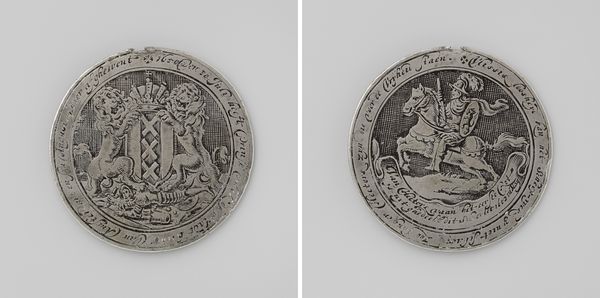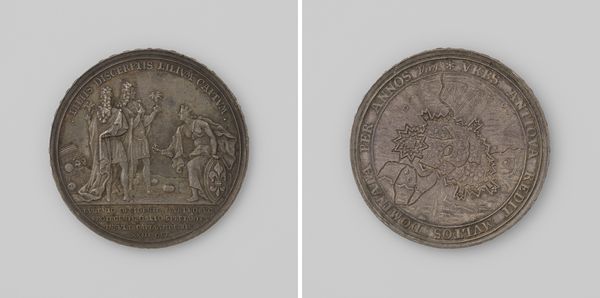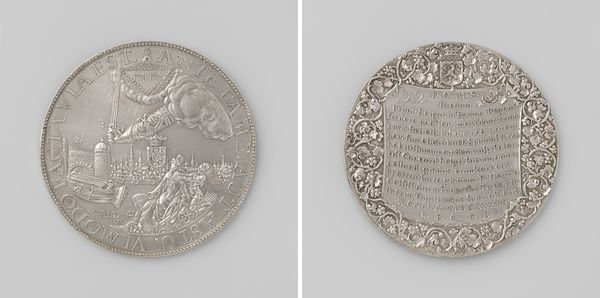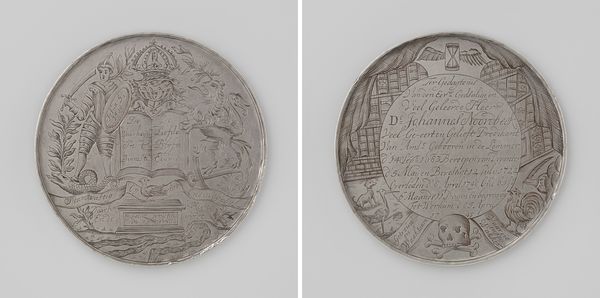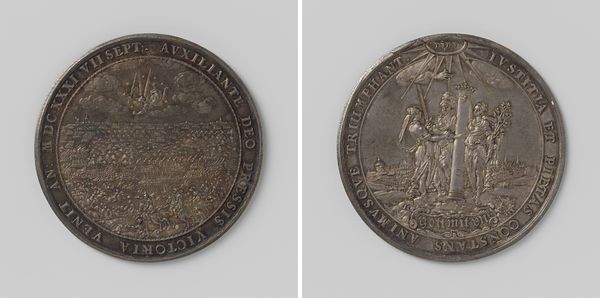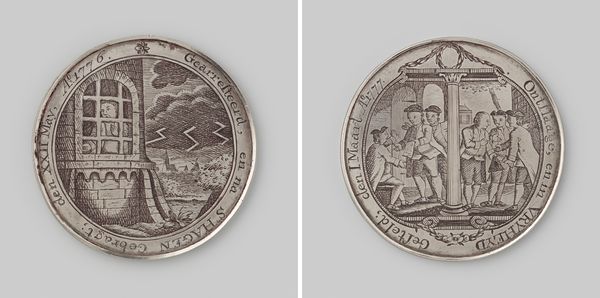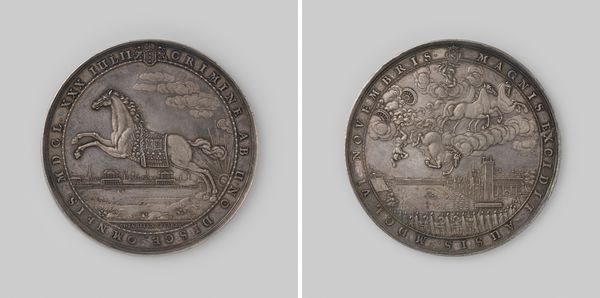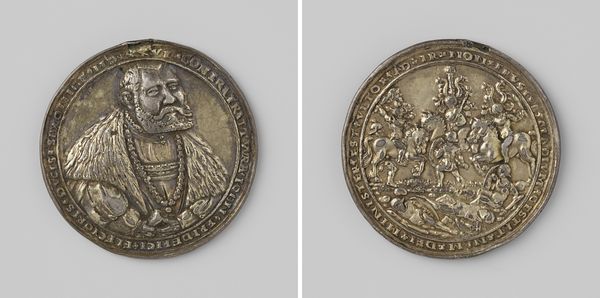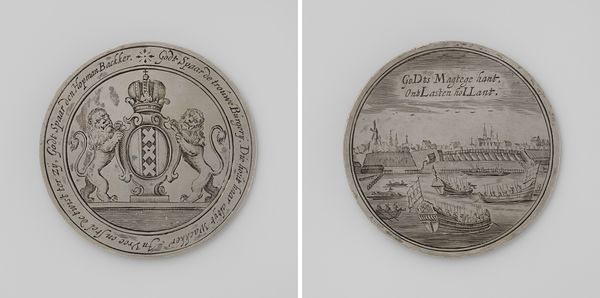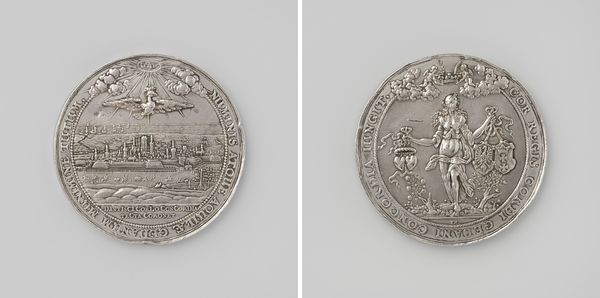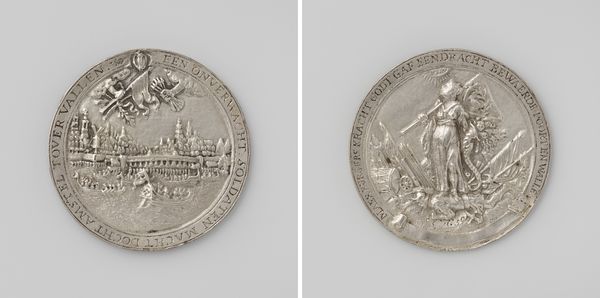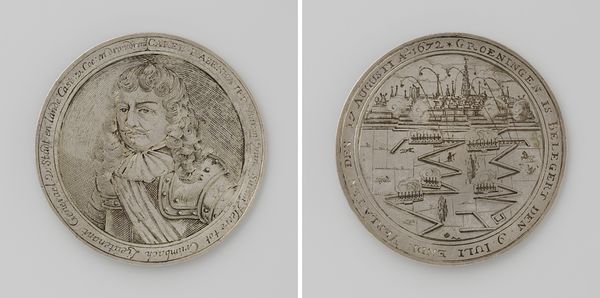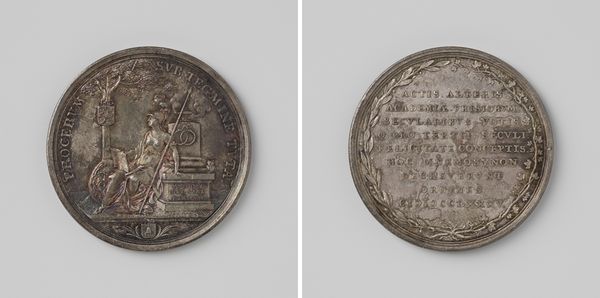
Beleg van Amsterdam, penning aan de schutters uitgereikt na het beleg 1652
0:00
0:00
print, metal, engraving
#
dutch-golden-age
# print
#
metal
#
old engraving style
#
cityscape
#
history-painting
#
engraving
Dimensions: diameter 5.6 cm, weight 31.27 gr
Copyright: Rijks Museum: Open Domain
This small silver medal was made by an anonymous artist to commemorate the end of the siege of Amsterdam in 1650. It is a fascinating object, a direct product of the historical moment it represents. The cool sheen of the silver, its small size and weight, all contribute to its preciousness. Medals like this were often created using a die-striking process, where a design is engraved into a metal die, which is then used to stamp the image onto the metal. This was a highly skilled and laborious process. These commemorative objects were made for distribution amongst the civic guard, to recognize the labor of those who defended the city. They were a kind of proto-capitalist token, distributed to the working men who put their bodies on the line. So, while seemingly a work of fine art, the medal is deeply embedded in the social and economic realities of its time. By considering the materials, making, and context, we can understand the full significance of this object.
Comments
No comments
Be the first to comment and join the conversation on the ultimate creative platform.
